Deep black as midnight: striking new moray eel discovered in Central Indo-Pacific river mouths, named after god of the underworld
Pensoft Publishers
image:
Live photo of Uropterygius hades
view moreCredit: Dr Wen-Chien Huang
The Hades’ snake moray (Uropterygius hades), a dark brown, slender snake moray eel, has chosen the road less traveled, thriving in dim and muddy river mouths, unlike most of its marine moray eel relatives. It is widely distributed across the Central Indo-Pacific, and has been found in southern Japan, Taiwan, the Philippines, southern Java, and Fiji. This new moray eel was named after Hades, the god of the underworld, due to its unique habitat, burrowing behavior, high sensitivity to light, and most notably, its deep, dark coloration.
Scientists Dr Wen-Chien Huang, Dr Rodulf Anthony Balisco, Dr Te-Yu Liao, National Sun Yat-sen University, Taiwan, Western Philippines University, the Philippines, and Dr Yusuke Hibino, Kitakyushu Museum of Natural History and Human History, Japan, describe this new species in a paper published in the open-access journal ZooKeys. They named it after Hades, the underworld god, to emphasize its imposing appearance and its habitat in dim, turbid environments. This idea was inspired by Dr. Wen-Chien Huang, who was influenced by Ralph Fiennes' portrayal of Hades in the movie Clash of the Titans.
There are approximately 230 species of moray eels worldwide, with most inhabiting marine environments. Only one species has been confirmed to spend the majority of its life in freshwater. Some marine species, like the slender giant moray (Strophidon sathete), can tolerate and occasionally enter lower-salinity environments such as river mouths. However, moray eels specifically adapted to estuarine habitats are exceedingly rare.
The discovery of Hades’ snake moray was actually accidental, when the three researchers from National Sun Yat-sen University investigated the cave of the Puerto Princesa Subterranean River, aiming to survey the aquatic fauna and targeting a cave eel species, the bean-eyed snake moray (Uropterygius cyamommatus). This eel, with its highly reduced eye size, is considered an ideal example for studying the evolutionary processes that allow eels to adapt to cave environments. However, the researchers did not find any bean-eyed snake morays in the cave; instead, they collected a slender moray with a conspicuous, uniformly deep dark color.
When kept in an aquatic tank, the Hades’ snake moray exhibits tail-first burrowing behavior, which is rarely seen in moray eels. Additionally, it is highly sensitive to light, consistently attempting to hide when exposed to it. Its small eyes—thought to be an adaptation to low-light environments—and its reduced number of head sensory pores—believed to help avoid clogging by the substrate—suggest that this species might be an excellent burrower, relying primarily on chemoreception rather than vision to detect prey or avoid predators.
Live photo of Uropterygius hades
Fresh specimen of Uropterygius hades
Fresh specimen of Uropterygius hades
Fresh specimen of Uropterygius hades

Fresh specimen of Uropterygius hades
Puerto Princesa Subterranean River, Palawan, the Philippines.
Puerto Princesa Subterranean River, Palawan, the Philippines.
Credit
Dr Wen-Chien Huang
Original source:
Huang W-C, Hibino Y, Balisco RA, Liao T-Y (2024) Description of a new uniformly brown estuarine moray eel (Anguilliformes, Muraenidae) from the Central Indo-Pacific Ocean. In: Ho H-C, Russell B, Hibino Y, Lee M-Y (Eds) Biodiversity and taxonomy of fishes in Taiwan and adjacent waters. ZooKeys 1220: 15-34. https://doi.org/10.3897/zookeys.1220.129685
Journal
ZooKeys
Article Title
Description of a new uniformly brown estuarine moray eel (Anguilliformes, Muraenidae) from the Central Indo-Pacific Ocean
Ealing beavers thrive in their year in the city
Tom Edwards
Environment correspondent, London•@BBCTomEdwards
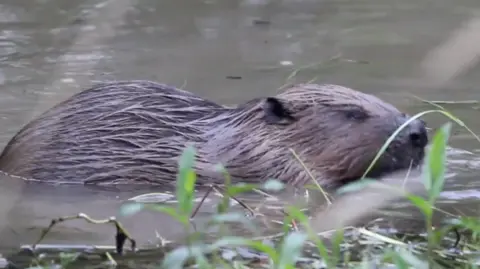 Ealing Beaver Project
Ealing Beaver ProjectThe Ealing beavers have made themselves at home in west London over the past year
A year ago, the UK's first urban beavers were introduced to their new home in Greenford in west London.
They live in Paradise Fields right next to a retail park.
Experts say the beavers are happy there and have had babies - or kits as they're known - and now the latest stage of their development is happening. One of the eldest females will be moved to help repopulate other areas of the UK.
Advertisement
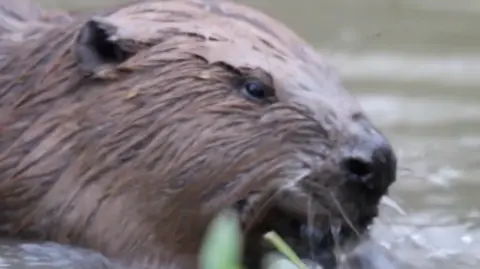
One of the Paradise Fields beavers feeding
Dr Sean McCormack is one of the experts from Ealing Beaver Project: "We are in very exciting phase of the project," he told BBC London.
"We are taking the adolescent female - the eldest daughter - she will be three in spring and naturally she would want to go off and find a territory of her own. So we found her a bachelor beaver in Wales and she's going to start a new family down there.
"It is normal. This is a managed population of beavers behind a fence. It's an enclosure trial. So what we're doing is we're going to take her out when she would naturally disperse on her own anyway and try and find your own territory.
"We use these contraptions called Bavarian beaver traps and we put some apples inside. Apples are absolutely irresistible to beavers and we're hoping to catch her over the next week or so and then bring her to Wales to her new husband."
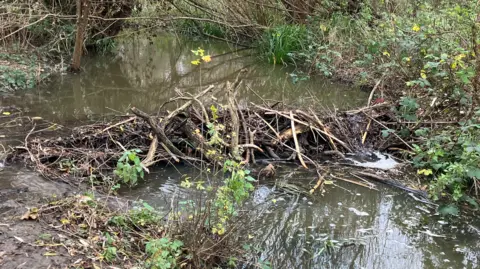
One of eight dams built by the beavers over the past year
The changes that the beavers have made to Paradise Fields are very obvious. They have built eight dams and three lodges where they live. A lot of trees have been felled and gnawed. Experts say the beavers open up the canopy and enable other wildlife species to flourish.
Walking tours are very popular. And the beavers have been given names by local children.
Advertisement
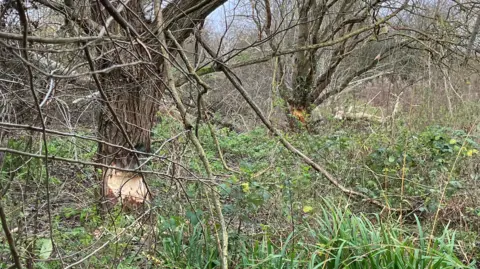
A tree showing the unmistakable signs of beaver gnawing
Roisin Campbell-Palmer, from the Beaver Trust, says the species are important in nature and wants the government to allow beavers to be released into the wild. Currently they can only be released under licence within enclosures.
"Beavers are really a good all-rounder," she says. "They really help with woodland restoration and regeneration, but they're probably more famous for the work they do in water courses.
"There are classic examples here now, the dams they have built. Not only does it slow the water but it's also cleaning the water as well, so they are really important for our environments."

A Bavarian trap full of apples - a snack that beavers find irresistible
Dr McCormack says the beavers have also proved effective at holding back floodwater.
"One of the objectives of this project was to look at how beavers impact urban flooding downstream around Greenford Tube station," he says.
"About two months ago we had a tremendous amount of rain overnight over two nights. Streets upstream around Greenford and lots of other streets all flooded, but the target area that we said that we would impact didn't flood.
"So the community really saw the benefits of having beavers back here."
Snails on ‘edge of extinction’ released into wild after breeding success
The snails can only be found on Islands in Madeira. Picture: Chester Zoo/PA
A snail may have been saved from the “edge of extinction” after more than 1,300 born in a world-first breeding programme were released into the wild.
The pea-sized Desertas Island land snail was once believed to have gone extinct after no sightings were recorded for more than a century, but conservationists from the UK and Madeira now hope to repopulate their North Atlantic home.
After two species of the snail were rediscovered on the rocky island of Desertas Granda in the Madeira archipelago, 60 out of less than 200 individuals were sent to Chester Zoo – where experts set about creating the right conditions for them to breed.
After several months, teir efforts were a success and both species were successfully bred for the first time ever in human care.
Armed with the perfect breeding conditions devised by Chester Zoo’s experts, more snails were then sent to the Bristol Zoological Society and Beauval Nature in France to further increase their population.
Now 1,329 snails bred through the programme have been sent to Bugio Island – where invasive species such as goats, mice and rats, which almost hunted them to extinction, have been removed.
The snails reintroduced to the island have been given markings in infra-red paint so they can be identified and monitored.
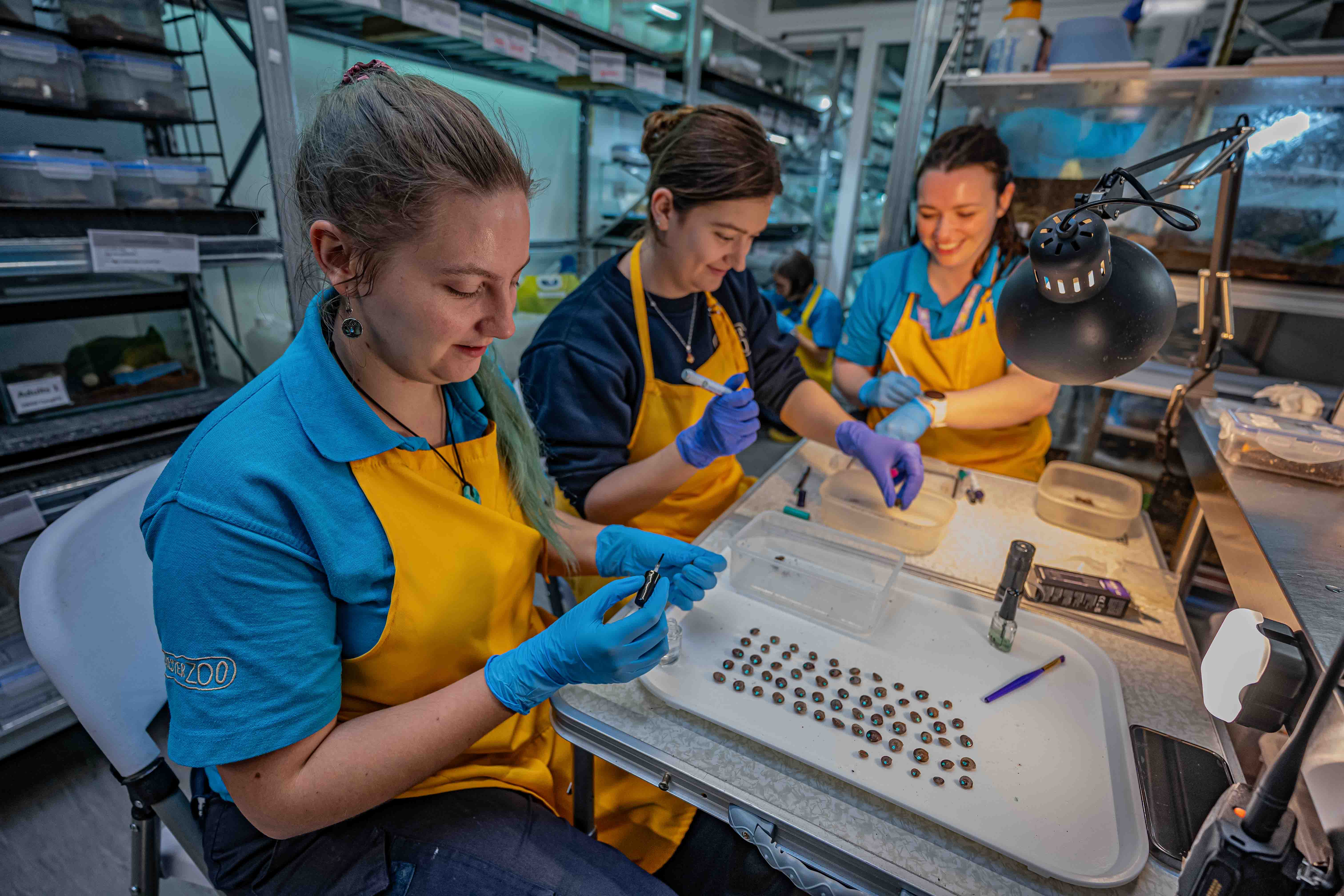
“When the snails first arrived in Chester the very future of the species was in our hands,” said Dr Gerardo Garcia, Chester Zoo’s head of ectotherms.
“As a zoo conservation community, we knew nothing about them.
“They’d never been in human care before and we had to start from a blank piece of paper and try to figure out what makes them tick: how to care for them, how to create an environment in which they could flourish, and how to encourage them to breed.
Chester Zoo invertebrate expert Heather Prince said it took the team a few months to “crack the breeding” of the snails.

“Crucially, we were then successful in breeding multiple generations,” she said.
“This was key because it meant we could then bring in the support of other zoos and establish a network, breeding them in the substantial numbers needed to have a chance of saving the species.”
Dinarte Teixeira, biologist and project manager at the Instituto das Florestas e Conservacao da Natureza, which discovered the animals, said: “These snails are incredibly precious.
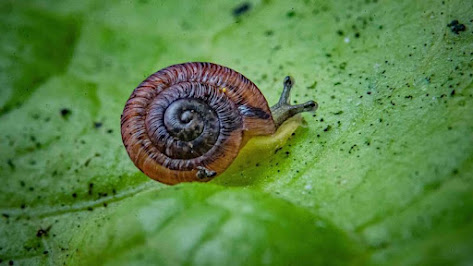
No comments:
Post a Comment